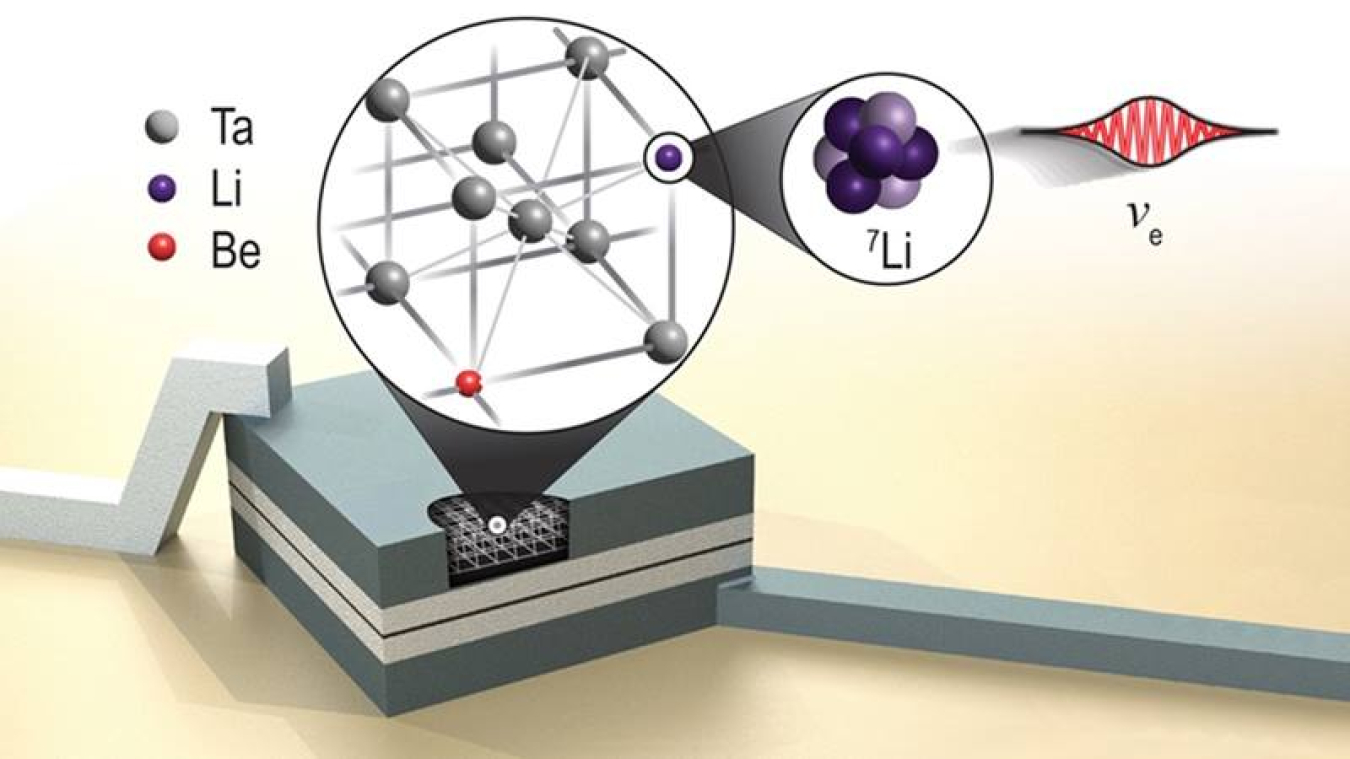Precise measurement of beryllium-7 nuclear decay recoils directly probes the quantum properties of the neutrino for the first time.
June 2, 2025The Science
Neutrinos are among the most abundant yet least understood particles in the universe. Now, nuclear scientists have measured the tiny energy of lithium atoms recoiling from the emission of neutrinos from radioactive decay. The study used advanced superconducting sensor technology that operates at near absolute-zero temperatures. This new technique provided the first direct quantum size limits on neutrino wavepackets. A quantum wavepacket is a wave that shows where a particle is likely to be, but it can spread out and change over time. The research also opens new possibilities in how scientists measure fundamental quantum mechanics.
The Impact
The demonstration of this technique opens new avenues in nuclear and particle physics. It has the potential to resolve debates on the scale of quantum localization in radioactive decay. This is the scale at which the quantum mechanical properties of particles become determined quantities. The research could also answer questions about the physics of neutrinos. In particular, the findings have implications for “sterile neutrino” interpretations of previous neutrino oscillation measurements, another implication of quantum mechanics. Sterile neutrino theories suggest that there are four or more flavors of neutrinos, not the three flavors that current theory suggests, but this is not supported by the most recent BeEST measurement. In addition, the findings could help shape future large-scale experiments involving neutrinos.
Summary
The enigmatic nature of neutrinos makes them a challenging target for experimental physics. The BeEST collaboration has achieved a breakthrough using rare isotopes directly embedded into advanced sensors to measure the tiny “kick” of a lithium atom following the radioactive decay of an exotic beryllium isotope. This work shows that the size of the neutrino wavepacket must be larger than 6.2 trillionths of a meter, or about 5% the size of a typical atom, using the high-resolution measurement of the recoil energy converted to a neutrino spatial width via the Heisenberg uncertainty principle.
The results challenge modern theoretical predictions about spatial localization in radioactive decay and represent a major step forward in the precision measurement of neutrinos. Collaborating institutions included the Colorado School of Mines, Lawrence Livermore National Laboratory, Pacific Northwest National Laboratory, and the Facility for Rare Isotope Beams, a Department of Energy Office of Science user facility.
Contact
Kyle Leach
Colorado School of Mines
kleach@mines.edu
Stephan Friedrich
Lawrence Livermore National Laboratory
friedrich1@llnl.gov
Funding
This research was funded by the Department of Energy Office of Science, Office of Nuclear Physics, Lawrence Livermore National Laboratory, Pacific Northwest National Laboratory, the Facility for Rare Isotope Beams, the Gordon and Betty Moore Foundation, TRIUMF, and the European Metrology Programme for Innovation and Research.
Publications
Smolsky, J., et al. (BeEST Collaboration), Direct experimental constraints on the spatial extent of a neutrino wavepacket. Nature 638, 640–644 (2025). [DOI: 10.1038/s41586-024-08479-6]
Related Links
New Nature article outlines how research led at Mines achieved breakthrough in our understanding of neutrinos, Colorado School of Mines Newsroom
How big is a neutrino? We're finally starting to get an answer, New Scientist Magazine
Neutrinos' quantum size likely thousands of times larger than atomic nuclei, IFLSCIENCE


